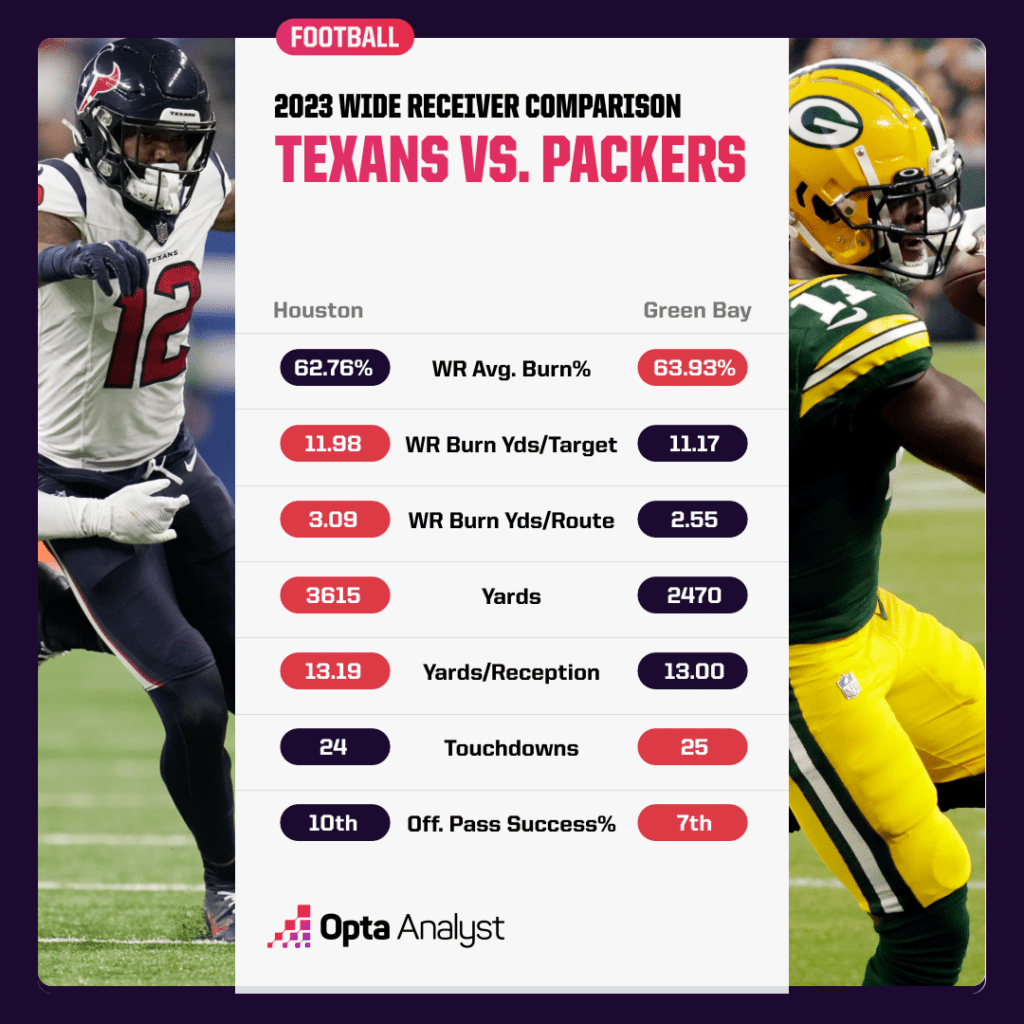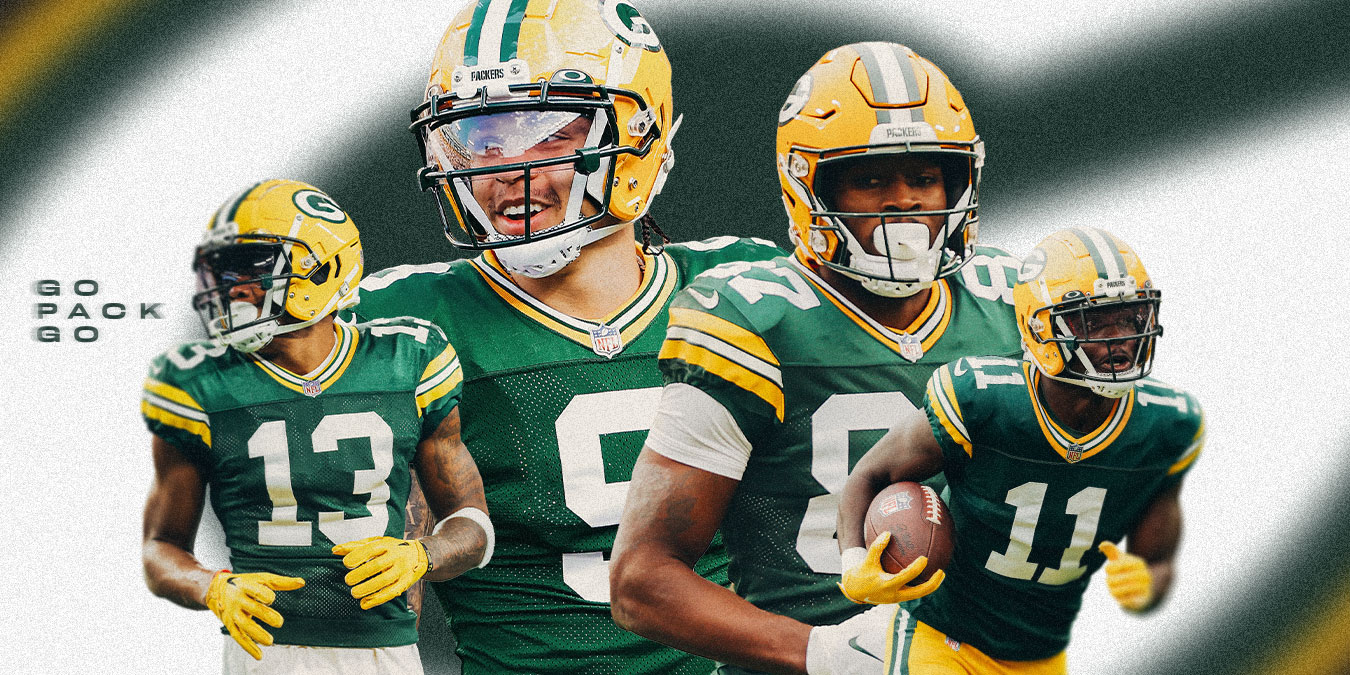Over the past several years, the NFL has rapidly evolved into a pass-heavy league. Just look at the contracts being handed out to receivers and quarterbacks recently and the amount of 1,000-yard pass catchers compared to 1,000-yard rushers.
As such, teams have invested serious cap dollars and draft capital in their receiver corps. It takes more than one or two dominant receivers to elevate an offense in the modern NFL, and the rosters have reflected this change after several teams have signed, traded for or drafted receivers to bolster their offense.
The Houston Texans traded for Stefon Diggs despite an already robust receiver room. The Chicago Bears traded for Keenan Allen and took Rome Odunze in the first round of the 2024 NFL Draft to give No. 1 pick Caleb Williams two receivers alongside DJ Moore.
The Kansas City Chiefs also traded up to take Xavier Worthy in the first round this year and signed Hollywood Brown. The Cleveland Browns traded for Jerry Jeudy. Even the Philadelphia Eagles recently traded a third-round pick for former first-round wideout Jahan Dotson.
The Texans, Bears, Chiefs and Eagles have elite receiving units in the NFL. That’s indisputable both from a statistical point of view as well as name recognition. But while claims can be made that any of those teams are at the top of the league at this position, the club with the best receiver room in the league is actually the Green Bay Packers.
While the Packers don’t have a true No. 1 pass catcher who will be the focal point for defenses to cover, Green Bay’s collection of four quality wideouts is the reason for this assessment. The quartet of Christian Watson, Jayden Reed, Romeo Doubs and Dontayvion Wicks are all consistently good enough to break out at any moment in any game. No other team in the NFL can boast a group as good as the Packers that runs four receivers deep.
Don’t worry, we’ll explain this realization further.
We’re specifically looking at a few things: burn rate and burn yards — effectively, the ability for a receiver to get open for their quarterback — as well as the target share breakdown on the roster. The key here is to find a receiving corps that is greater than the sum of its parts, meaning that the group isn’t dominated by one or even two receivers.
For example, the Miami Dolphins and San Francisco 49ers ranked near the top of the league in burn rate and burn yards in 2023 because their top players — Tyreek Hill and Jaylen Waddle for Miami and Brandon Aiyuk and Deebo Samuel for San Francisco — ranked among the best in the league. But that’s the extent of each team’s receiver rooms.
In looking at the top NFL receivers with at least 50 targets in 2023, we counted the number of receivers for each team across four metrics. These are considered above average in the league: a burn rate greater than 53.40%, burn yards per target greater than 9.85, burn yards per route run greater than 1.90 and target share less than 30%.
Six teams had three or more receivers (including rookies) who satisfied at least two of the necessary metrics: the Packers, Texans, Chiefs, Dolphins, Browns and Bears.
However, only three teams had at least four receivers in at least two of those metrics — the Packers, Texans and Chiefs (we included Worthy considering his college numbers at or above average). So if we’re looking for the deepest group of quality pass catchers, this is the unequivocal top three in terms of quality depth.
By this logic, the Packers and Texans rise above the Chiefs both in terms of depth and production. The Packers and Texans also rank eighth and 10th in the league, respectively, in average receiver burn rate (both are more than 10% higher than the league average), although Houston ranks fifth and fourth in average burn yards per target and route run while Green Bay ranks 15th in both.
However, the two sides are pretty comparative when you line up their raw receiving numbers against each other.
Despite more than 1,000 difference in receiving yards, the Packers have more touchdowns and almost the same yards per reception among their top-four receivers, meaning that the Green Bay’s pass catchers are a bit more efficient than Houston’s. The Packers also finished ahead (seventh in the NFL) of both Kansas City (eighth) and Houston (10th) in pass success rate last season.

Now, there are a few potential pitfalls with this assessment based on 2023 data alone.
Despite all four Texans’ receivers clearing all the metrics easily, the addition of Diggs to the offense complications how reliable these numbers will be in 2024.
It’s hard to completely grasp how Diggs will be integrated into the offense and how that will affect the target distribution between him, Nico Collins and Tank Dell. Diggs averaged 11.3 targets per game for the first eight weeks of the 2023 season before that number dropped to 7.8 in the final nine weeks.
Robert Woods tied for third on the team in targets last season with 75, but his target share dropped precipitously over the second half of the season. He averaged 7.2 targets per game from Weeks 1-6 and missed two games with a hip injury before he saw just 5.4 targets from Weeks 9-16. That included four weeks without Dell and one week with Collins. His role could be reduced further if third-year receiver John Metchie III develops, although Metchie saw just 30 targets in 2023.
Similarly, with Green Bay, Wicks didn’t become a bigger piece of the offense until Week 13 after Watson sustained a season-ending injury. Wicks averaged 5.5 targets per game from then until the rest of the season after seeing just 3.3 targets per game in the first 11 games of the year. It appears as though Wicks will remain a part of the offense after a torrid preseason, but, again, it’s hard to know for sure before a regular season snap has been played.
So while the depth on these two teams is incredibly strong, it could be more of a mirage depending on how often the rest of the players see the field.
This is where the Packers’ true trump card presents itself. Green Bay, which our model tabs as the favorite in the NFC North with a 57.1% chance of winning it, has a big advantage in the receiver room when it comes to continuity. This group is identical to its 2023 counterpart with the same quarterback under center and the same offensive play-caller — Matt LaFleur — on the sideline.
Every other team’s receiving corps on this list has new wrinkles that aren’t guaranteed to work out. The Texans added Diggs, the Chiefs brought in Brown and Worthy, the Dolphins added Odell Beckham Jr., the Browns acquired Jeudy, the Eagles traded for Dotson, while the Bears have Allen, Odunze and a new quarterback under center.
All five of those teams also have clear No. 1 and No. 2 options as well. The Packers, meanwhile, have four guys who, as quarterback Jordan Love said himself “can step up and be the [No.] 1 any given day.” When asked which receiver he saw as the team’s No. 1 option, LaFleur said he felt the Packers “got a bunch of ‘em.”
That top-target-getter ambiguity is also a positive for this exercise. While the Packers don’t have any bonafide stars — yet — among their youthful receiver room, the depth of the collection of skilled pass-catchers puts them above the rest of the NFL. If one drops, the rest can easily pick up the slack. If a defense keys on another, the others are just as deadly.
Now, it’ll be on Love to elevate the success of 2023 into 2024 with the same group.
Be sure to check out our MLB, NBA, NFL and college football coverage. And follow us on X and Instagram for more!
